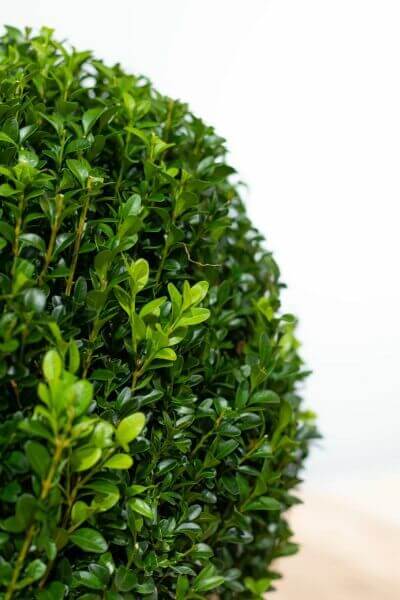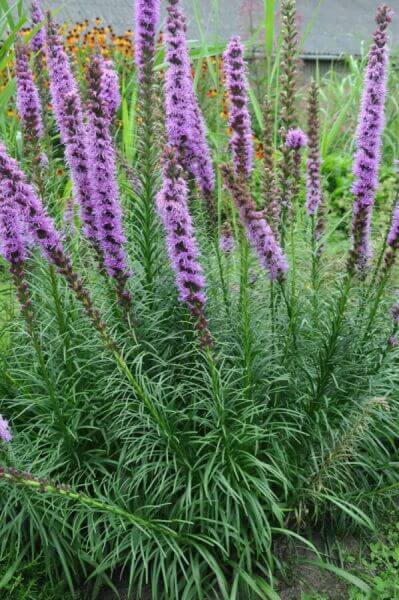Hedge Plants For Community Gardens
Hedge Plants For Community Gardens
Blog Article
Best Hedge Plants For Wet Soil
Enhance your garden's attraction with rich hedge ranges such as Yew (Taxus), Thuja, Laurel, Photinia, and Bamboo, commemorated for their structural integrity and ecological benefits.
Yew and Thuja provide evergreen protection and winter resilience, while Laurel offers rapid development and broad, aromatic leaves.
Photinia includes seasonal appeal with its vibrant red foliage, and Bamboo lends a low-maintenance, serene atmosphere.
These hedges enhance air quality, minimize noise, and develop tranquil, personal spaces.
Appropriate planting, spacing, and maintenance make sure energetic growth and ecological consistency.
Check out how these lush ranges can elevate your garden's charm and well-being.
Key Takeaways
Transform Your Garden With Lush Hedge Ranges
- Select Yew for its thick, evergreen development and unequaled longevity.
- Opt for Laurel for its quick growth and broad leaves, guaranteeing fast personal privacy.
- Choose Photinia for its dynamic seasonal foliage, which turns a striking dark red.
- Use Bamboo for a low-maintenance, winter-hardy hedge with visual appeal.
- Area plants 2-3 per meter and prune frequently for optimum development and health.
Popular Hedge Plants
When changing a garden with lavish hedge ranges, it's important to consider popular hedge plants such as Yew, Thuja, Laurel, and Photinia due to their unique characteristics and benefits.
Yew (Taxus) is highly esteemed for its longevity and dense, green development, making it a prime option for sustaining landscapes.
Thuja is kept in mind for its evergreen foliage and robust winter season strength.
Photinia includes seasonal vibrancy with red leaves that darken over time, creating dynamic visual appeal.
Laurel offers quick development and aromatic, broad leaves, suitable for quick privacy.
Additionally, Bamboo is an excellent choice for atmosphere, using a low-maintenance, winter-hardy choice that improves the garden's aesthetic with its classy, swaying walking canes.
These choices accommodate a variety of horticultural requirements and choices.
Benefits of Garden Hedges
Garden hedges offer a multitude of advantages, making them an important addition to any landscape. These natural barriers are affordable to implement and supply considerable wind protection, boosting air flow and contributing to sound reduction. The dense foliage of hedges like Thuja and Beech makes sure privacy by blocking exposure, creating a tranquil and secluded environment.
Hedges also play an important role in microclimate guideline, providing a steady environment that promotes plant growth and decreases temperature fluctuations. Their detailed leaf structures filter contaminants, improving air quality and adding to a much healthier garden community.
Additionally, hedges excel in sound reduction, soaking up and deflecting sound waves to lower ambient noise levels. This double functionality of offering both visual and acoustic personal privacy enhances the general tranquility and visual appeal of any garden.
Planting and Maintenance Tips
For an effective hedge, careful preparation of the planting area is vital. Ensure the soil has appropriate pH and drain to support strong root development.
Space the plants appropriately for the picked types. Water the hedge frequently during its preliminary development stage, changing as needed with seasonal changes.
Execute a organized pest control and disease prevention method, utilizing chemical or organic treatments when required. Routinely check for aphids, termites, and fungal infections.
Apply mulch to maintain moisture and suppress weeds. Seasonal pruning promotes dense growth and air flow, important for plant health.
Following these standards will assist you cultivate a lively, properly maintained hedge that boosts the appeal of your garden.
Spacing and Cutting Standards
Spacing and Cutting Standards
Correct spacing and cutting are vital for cultivating healthy, aesthetically appealing hedges. Adequate spacing makes sure each plant gets enough nutrients, light, and air flow.
Follow these standards for optimum hedge upkeep:
- Spacing: Position hedge plants 2-3 plants per meter to motivate robust growth.
- Pruning Methods: Regular pruning is essential for maintaining desired hedge height and shape. Cut brand-new development in summer and cut back older wood throughout winter.
- Seasonal Care: Change cutting methods and schedules according to seasonal requirements to guarantee plant health.
- Hedge Height: Frequently monitor and trim to keep the desired hedge height and accomplish consistent looks.
Complying with these steps will ensure your hedge prospers, boosting both the appeal and functionality of your garden.
Selecting the Right Hedge
Picking the Right Hedge
Picking the appropriate hedge involves assessing aspects such as fully grown height, foliage density, and environmental resilience. Successful hedge plant selection needs comprehending each types' development attributes and site-specific adaptability.
For example, Yew (Taxus) uses outstanding longevity and thick development, while Thuja is noteworthy for its winter season strength. In addition, considering upkeep requirements is vital; fast-growing species like Laurel or Privet need routine cutting, whereas low-maintenance alternatives like Bamboo or Ivy may be more effective for those looking for very little maintenance.
Ecological aspects such as soil type, light accessibility, and wetness conditions must likewise direct the selection process. This careful approach ensures the chosen hedges will grow, supplying both visual and practical advantages to the garden landscape.
Delivery and Planting Guidance
To ensure your hedge plants grow, they need to be provided by specialized couriers and planted promptly upon arrival.
Follow these necessary actions for successful planting:
- Soil Preparation: Enrich the soil with natural matter to improve drainage and nutrient material.
- Planting Depth: Produce a trench two times the width and equal to the depth of the root ball.
- Watering Strategies: Water thoroughly after planting, keeping the soil consistently wet but not saturated.
- Mulching: Use a layer of mulch to maintain moisture and reduce weeds.
Client Support and Service
Offered the crucial function of timely help in horticultural pursuits, our client support group is offered six days a week through telephone, e-mail, and social media to use professional advice and promptly deal with any issues. Their commitment to quick reaction times ensures client complete satisfaction by resolving inquiries related to plant health, ideal planting approaches, and maintenance schedules.

-------------------
Within 48 hours
This detailed support group, enhanced by an outstanding 9.3/ 10 customer ranking, highlights our dedication to enhancing the gardening experience for every single client.
Regularly Asked Questions
The Length Of Time Does It Take for Hedge Plants to Develop?
Hedge plants normally need one hedging plants to three years to end up being completely developed, with the exact period differing by species and growing conditions.
Reliable care during this important period is vital for robust growth. Consistent watering, alert weed control, and appropriate fertilizer application are critical in promoting strong root advancement.
For example, fast-growing types like Laurel might establish quicker, while slower-growing ranges such as Yew might take longer. Persistent upkeep accelerates the establishment procedure, leading to healthy and dense hedges.
What Are the Best Hedge Plants for Personal Privacy?
The concern of the best hedge plants for privacy includes evaluating evergreen and deciduous choices.
Evergreen hedges like Thuja, Laurel, and Cypress offer year-round protection, making sure continuous privacy.
In contrast, deciduous hedges such as Beech provide seasonal personal privacy, shedding leaves in colder months.
Secret upkeep tips for privacy hedges include regular trimming, fertilizing in spring, and appropriate spacing-- generally 2 to 3 plants per meter.
Furthermore, constant watering and persistent weed elimination are important for promoting healthy, thick growth.
Can Hedge Plants Draw In Wildlife to My Garden?
Yes, hedge plants can draw in wildlife to your garden by providing important benefits like shelter, food, and nesting sites, thereby enhancing regional biodiversity. For example, yew, holly, and laurel are exceptional for bring in birds, while ivy supports a range of bugs.
Nevertheless, it is necessary to note that there are some drawbacks, such as increased upkeep to handle insects and regular maintenance. Carefully selecting and maintaining hedge varieties can assist stabilize these benefits and drawbacks, ultimately cultivating a sustainable and dynamic ecosystem in your garden.
Exist Any Flowering Hedge Plants Available?
Yes, there are flowering hedge plants readily available that can improve the beauty of your garden.
For instance, Elaeagnus, also referred to as Olive Willow, produces fragrant white flowers in the fall, including a touch of beauty.
Photinia, another popular option, showcases dynamic red leaves that grow into a rich green, developing a dynamic visual result throughout the seasons.
To ensure these plants grow, it's necessary to practice correct pruning methods and seasonal upkeep, such as trimming brand-new growth in the summertime and cutting down in the winter.
These measures will help preserve the health and aesthetic appeal of your flowering hedges.
How Do I Prevent Pests in My Hedge Plants?
To prevent bugs in hedge plants, use natural bug control approaches and preserve appropriate hedge care. Introduce beneficial pests like ladybugs, which victimize hazardous pests, to develop a well balanced environment.
Routinely inspect your hedges for signs of problem and without delay eliminate any affected parts to avoid the spread. Guarantee the health of your hedges by applying well balanced fertilizers and providing appropriate water.
Use mulching to retain soil wetness and appropriate spacing to minimize plant stress and promote robust development. These practices collectively assist in reducing pest problems and maintaining a healthy hedge.
Conclusion
In essence, selecting the right hedge ranges such as Yew, Thuja, and Laurel can change any garden into a peaceful sanctuary. These plants provide year-round plant, enhance visual appeal, and deal practical advantages like noise reduction and wind defense.
Proper planting methods, precise spacing, consistent watering, and seasonal cutting are vital for ideal development.
Dependable delivery services and skilled customer assistance make sure a seamless experience from purchase to planting, making it simpler than ever to raise your outdoor space.
Garden hedges provide a multitude of benefits, making them an important addition to any landscape. These natural barriers are cost-effective to execute and supply substantial wind protection, improving air flow and contributing to sound decrease. The dense foliage of hedges like Thuja and Beech ensures privacy by blocking presence, developing a serene and secluded environment.

Pruning Strategies: Regular pruning is essential for keeping preferred hedge height and shape. Cut new growth in summer season and cut back older wood during winter season.
Report this page